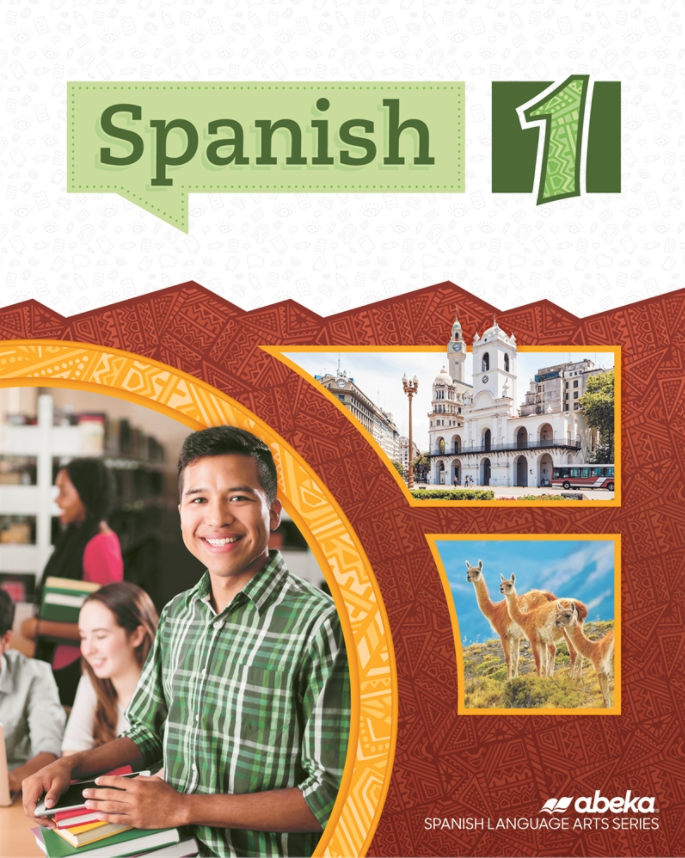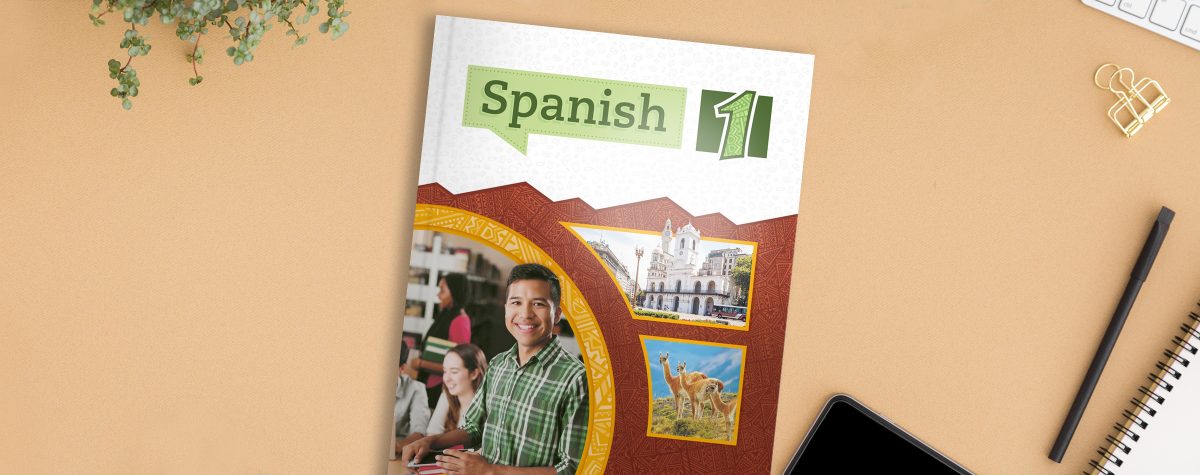Abeka’s Spanish curriculum hasn’t simply been updated: It’s 100% new and full of amazing content and features.
To learn about this new program, we talked with editor Ninoush Kozel, who grew up in a Spanish-speaking home. She has both undergraduate and graduate degrees in education, has taught Spanish at Pensacola Christian Academy, and now works in Abeka’s publishing department alongside her husband, Stephen, who designed the Spanish 1 book.
Q: How did you go about making a brand-new textbook like Spanish 1?
A: “We wanted to create a product that meets the needs of our customers, uses current terms relevant to students’ everyday lives, presents a biblical worldview, and is in line with Abeka’s philosophy and approach. In addition to evaluating customer comments, we researched state standards, curriculum mapping, and other foreign language resources to develop a program that would give teachers and students the excellent experience they expect from Abeka.”
Q: How will Spanish 1 improve students’ learning?
A: “The book progresses from the known to the unknown: starting with the alphabet, then nouns and verbs, then building sentences. As much as possible, Spanish concepts are tied to familiar English concepts. The book also incorporates spiral review, continually coming back to previous material.
Notes throughout the book go above and beyond the foundation of what students already know, prompting them to apply their skills to figure out something new.
In a typical class day, students will review Bible verses and vocab, then learn or review a grammar concept. They frequently get oral and listening practice by doing readings, conversations with partners, acting out dialogues, and singing songs from their Oral Fluency Exercises book.
Each unit has a Survival Skills section that prepares students for practical situations they might encounter if they visit a Spanish-speaking country. They learn greetings, how to tell time and ask for directions, and common phrases for situations like shopping, traveling, and ordering in a restaurant.”
Q: What are some key differences between Abeka’s curriculum and other Spanish textbooks?
A: “Our program has a stronger emphasis on grammar, rather than just having students memorize phrases. Our students will know why they’re saying what they’re saying. We also emphasize stress placement and accent marks so that students can say words correctly instead of saying a Spanish word with an English accent.
The student book is very well organized, and students can easily keep track of their materials because grammar, vocab, and homework are all contained in one book. Since students write answers in their books instead of on a separate sheet of paper, it’s easier to use that work for review later on. They can just flip back and see what they did in each exercise.”
Q: In what ways will the Spanish program help teachers make their classes amazing?
A: “Lots! Being user-friendly is one of Abeka’s strengths.
We always say our goal is to give a first-year teacher the tools to be as successful as an experienced teacher. A new teacher can look at the tips and notes and be ready to explain concepts well instead of having to spend extra time for class prep.
Everything is laid out step by step in the Teacher Edition, so there’s no question about what they’re supposed to do every day. All the lesson plans, tips, notes, and checkpoints are right next to the inset student page so that the teacher doesn’t have to keep the student book open while teaching. The TE is hardback, spiral-bound, and consists of two separate volumes, so it’s easy to manage.
Many of the things the teacher usually needs to prepare for class are already prepared in the Digital Teaching Slides and Digital Teaching Aids. Those will save a ton of time and make class run more smoothly and effectively—and if a teacher isn’t completely fluent, students will still be able to hear proper pronunciation because everything they need to hear has been recorded by native Spanish speakers.
To encourage critical thinking, we point out any exercises that lend themselves to the teacher asking, ‘Why did you answer that way? Why is it not this way?’ so that the teacher can take the students a step further with analysis. They’re not just writing and answering; the teacher can assess whether they’re truly thinking about what they’re doing.”
We don’t know what God has in store for your students’ futures—whether they’ll serve the Lord on the mission field, use their Spanish skills in the workplace, meet Spanish-speaking friends, or just benefit from the critical thinking skills gained from studying a language—but we’ve done everything we can to make this Spanish program an excellent part of their education.

See how Abeka’s new Spanish 1 program can get your students excited to learn Spanish.
Learn More



Comments for Interview with the Editor: New Spanish 1 Curriculum
Add A Comment
Your email address will not be published. Required fields are marked *